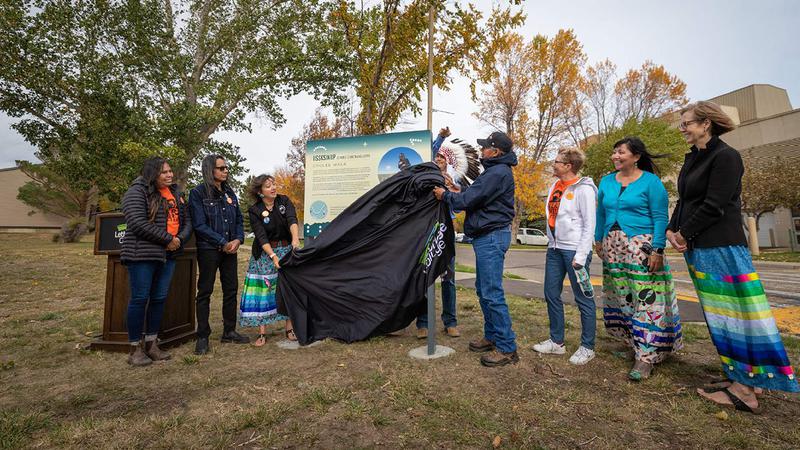
Lethbridge College unveils new coulee plant walk highlighting Blackfoot history
LETHBRIDGE, AB – The land where Lethbridge College stands has been home to the Blackfoot people for thousands of years.
On Tuesday, as part of Truth and Reconciliation Week, the college unveiled the Iissksiniip Coulee Walk. The self-guided tour explores the traditional plants found in the area, explains their uses and shares some of the traditional creation stories of the Siksikaitsitapi, the Blackfoot Confederacy.
The walk was created by traditional Blackfoot plant knowledge keeper and artist William Singer III (Api’soomaahka – Running Coyote) in conjunction with the college’s Indigenous Services team.
Shanda Webber, the college’s manager of Indigenous Services, said, “for this project, it was our vision to build on our collective story of what it means to reside on Blackfoot territory and the importance of sharing a cultural narrative that strengthens our relations and understanding of living in harmony with our Indigenous communities and the land that sustains us all.”



